Abstract
1. Isoprenaline injection into either the unanaesthetized ovine foetus or the pregnant ewe produced a transient tachycardia and hypotension in either the ewe or the foetus. No evidence was obtained for placental transfer, in either direction, of pharmacologically active isoprenaline.
2. Propranolol, when given to the ewe intravenously, produced bradycardia and increased pulse pressure and inhibited the response of both the ewe and her foetus to isoprenaline. Propranolol, when given to the foetus intravenously, produced bradycardia and increased pulse pressure in both the foetus and the ewe, but only the foetal response to isoprenaline was inhibited. These data demonstrated that propranolol crossed the ovine placenta in both directions in a pharmacologically active form.
3. Dose-heart rate curves of the foetus and pregnant ewe to isoprenaline and the shift to the right of the isoprenaline dose-response curves by propranolol were similar in both the ewe and the foetus.
4. Notwithstanding the similarities between the ewe and foetus in their responses to isoprenaline or propranolol and in the antagonism of isoprenaline by propranolol, the duration of blockade following propranolol administration to the ewe was 2 to 3 times longer in the foetus compared with the ewe.
5. Measurement of blood levels of propranolol showed that the maximum concentration of propranolol in foetal plasma was only 5% of that in the pregnant ewe when propranolol was infused into the ewe; the rate of clearance of propranolol was similar from the foetal and maternal plasma.
6. From these data the long duration of β-adrenoceptor blockade in the ovine foetus by propranolol cannot be fully explained. However, these data serve as examples of the dangers involved when extrapolating pharmacological actions of drugs on the foetus purely from data on foetal plasma levels of the drug.
7. The data suggest that multiple doses of propranolol, given to maintain a β-adrenoceptor blockade in the mother, could result in serious cumulative effects in the foetus.
Full text
PDF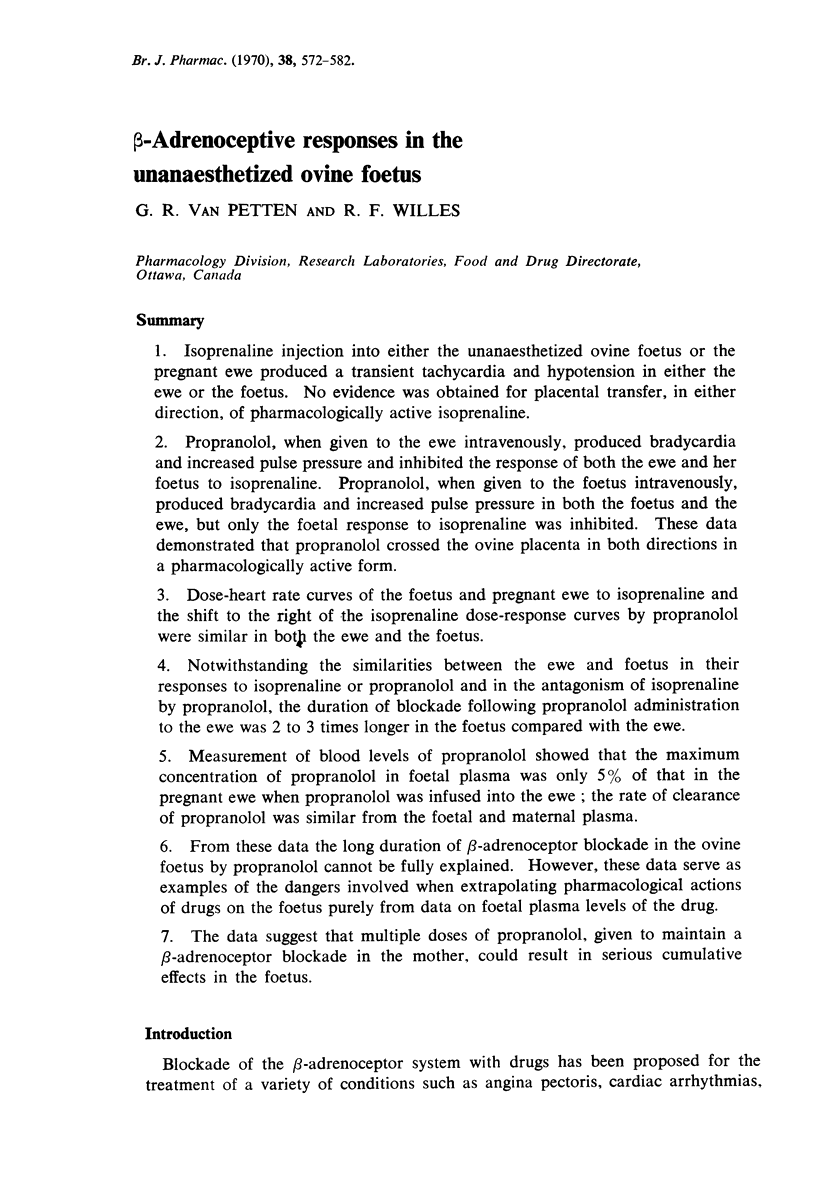
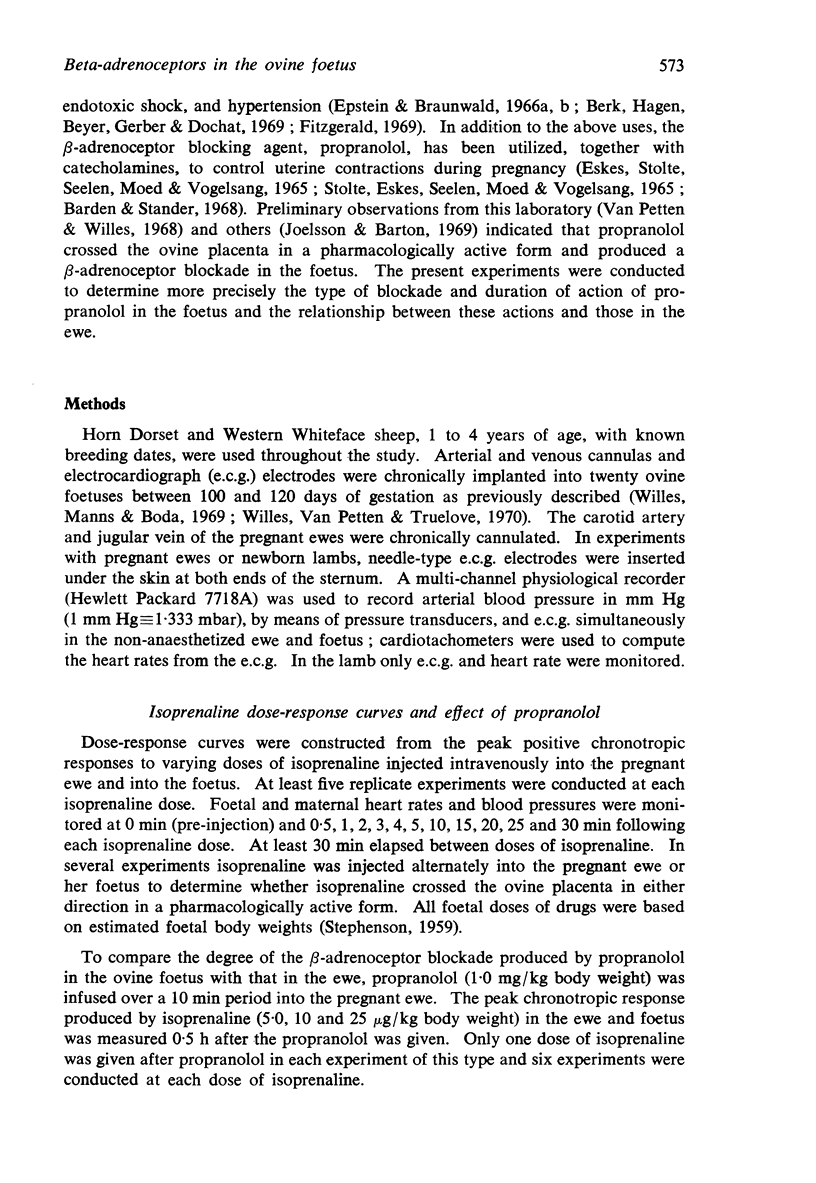
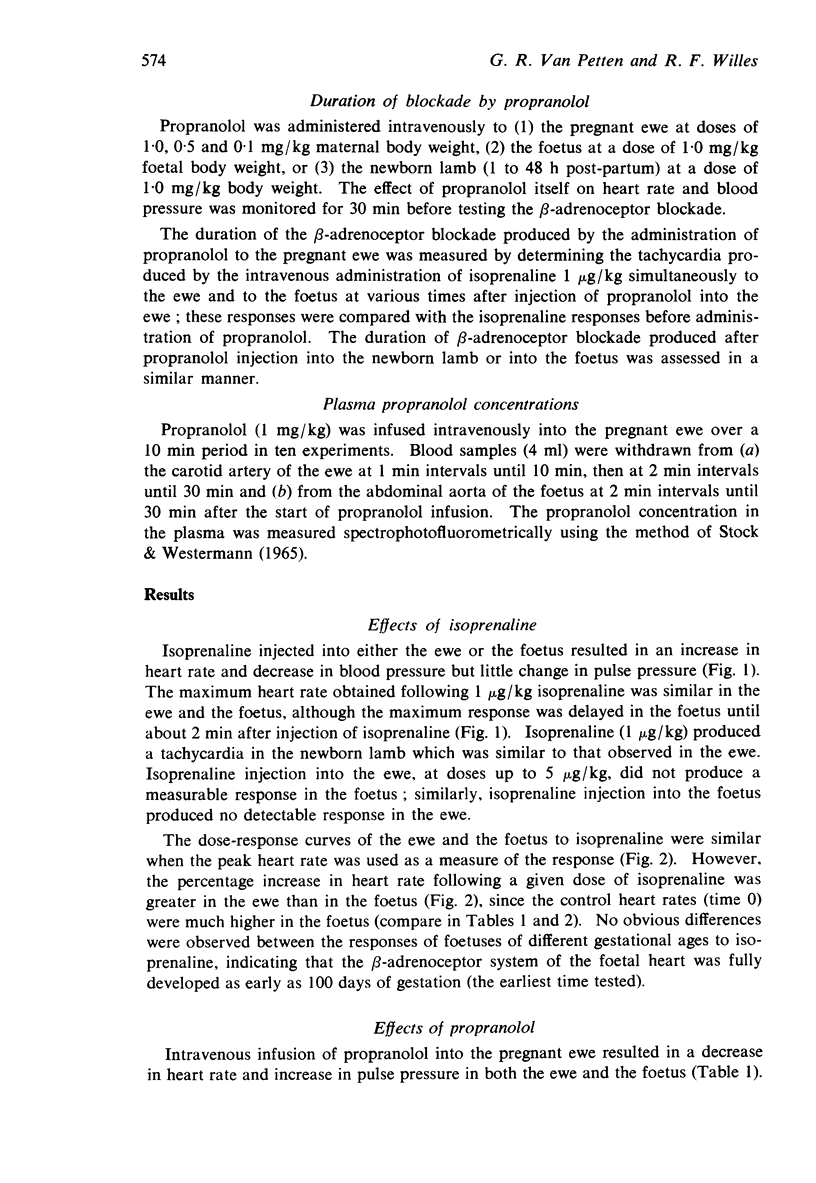
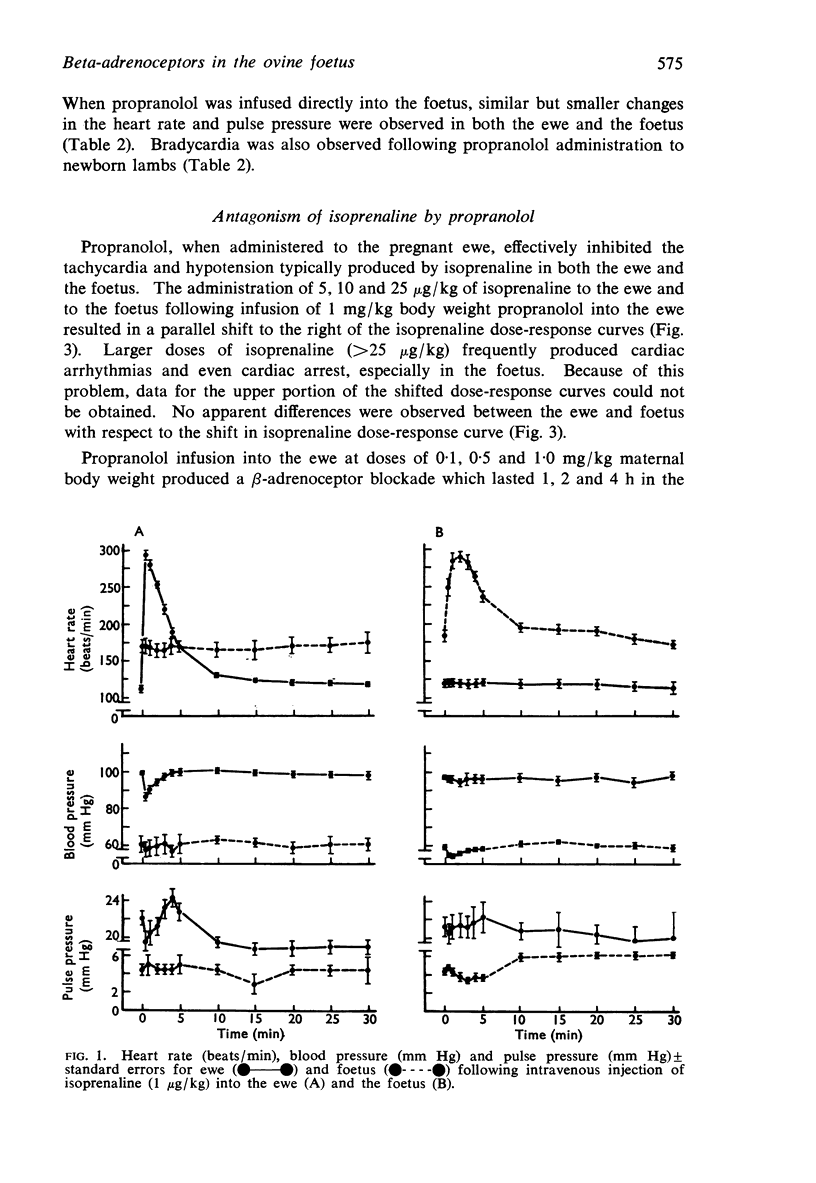
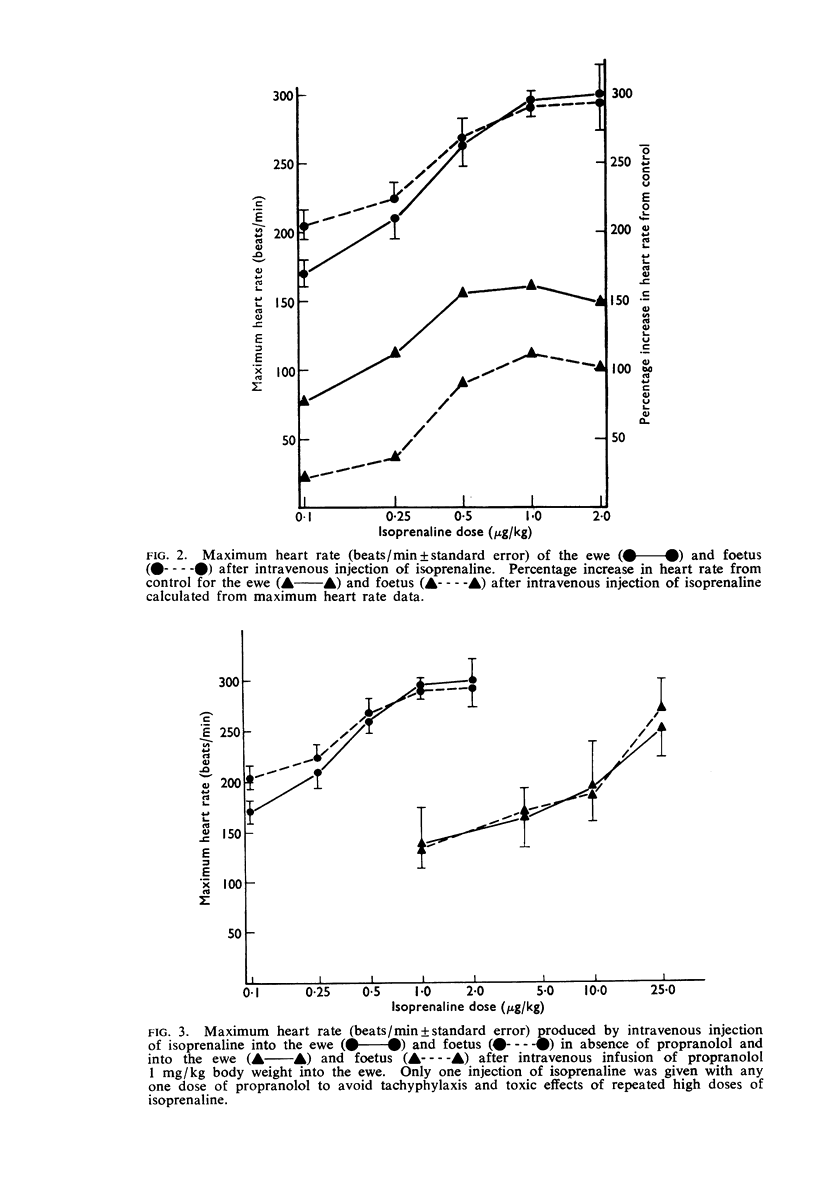
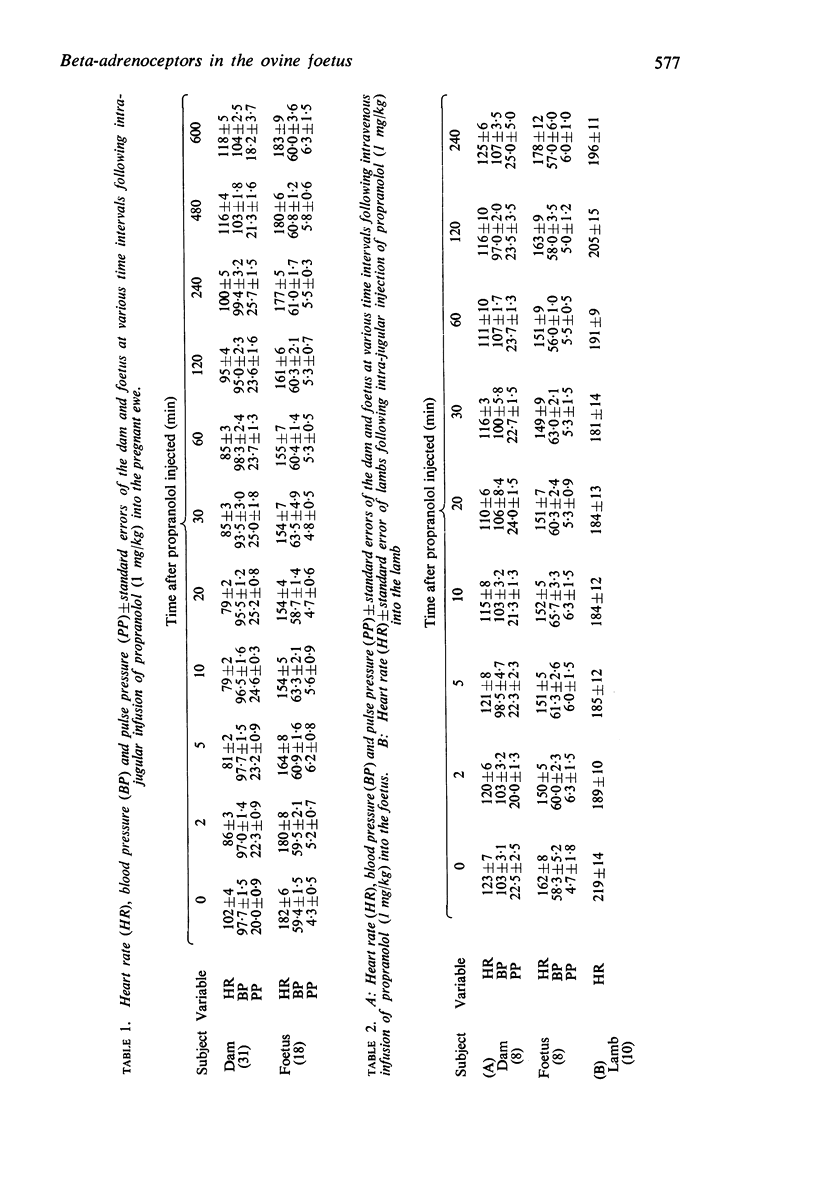
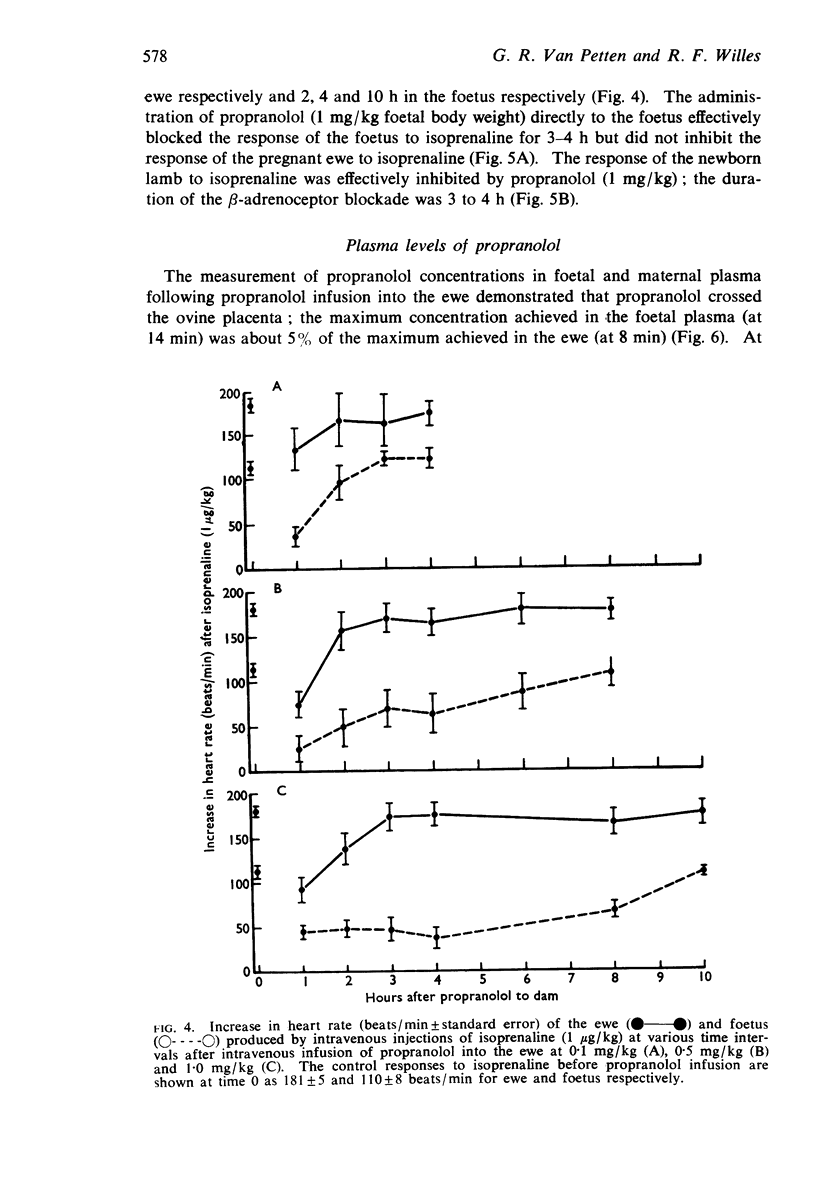
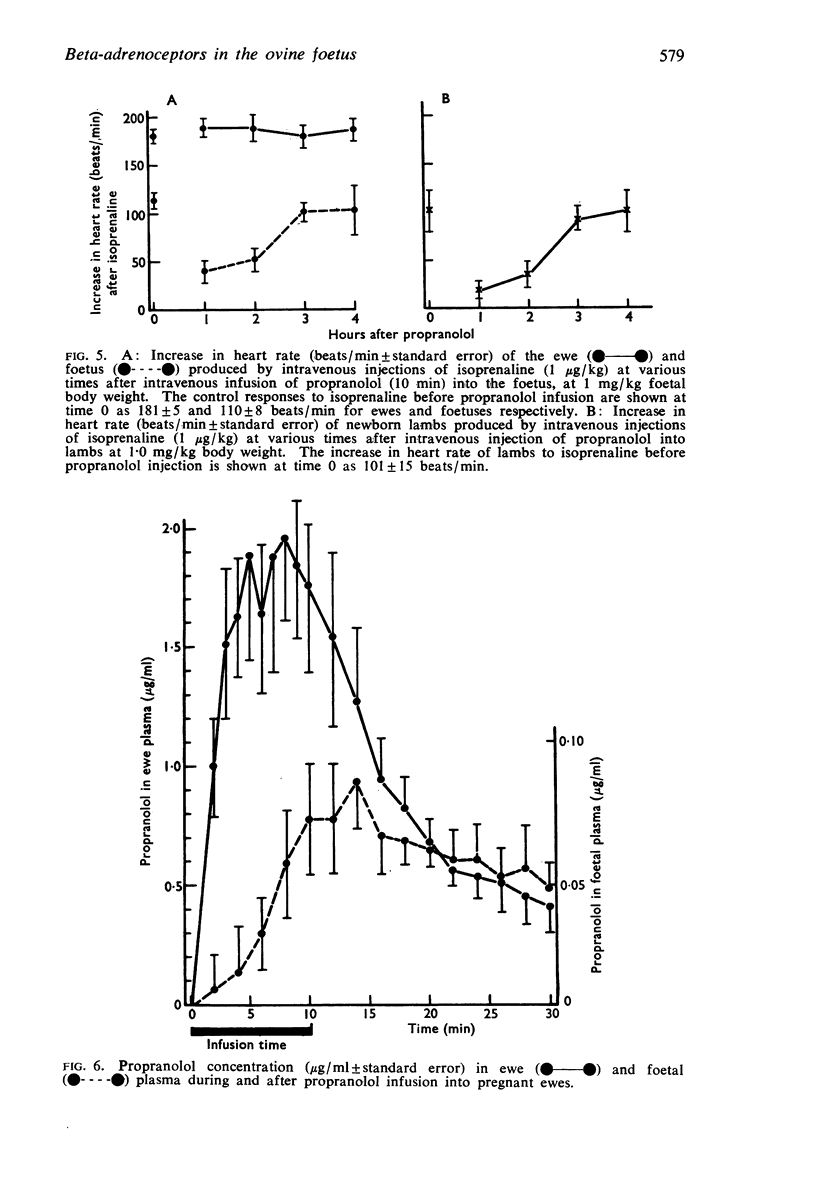

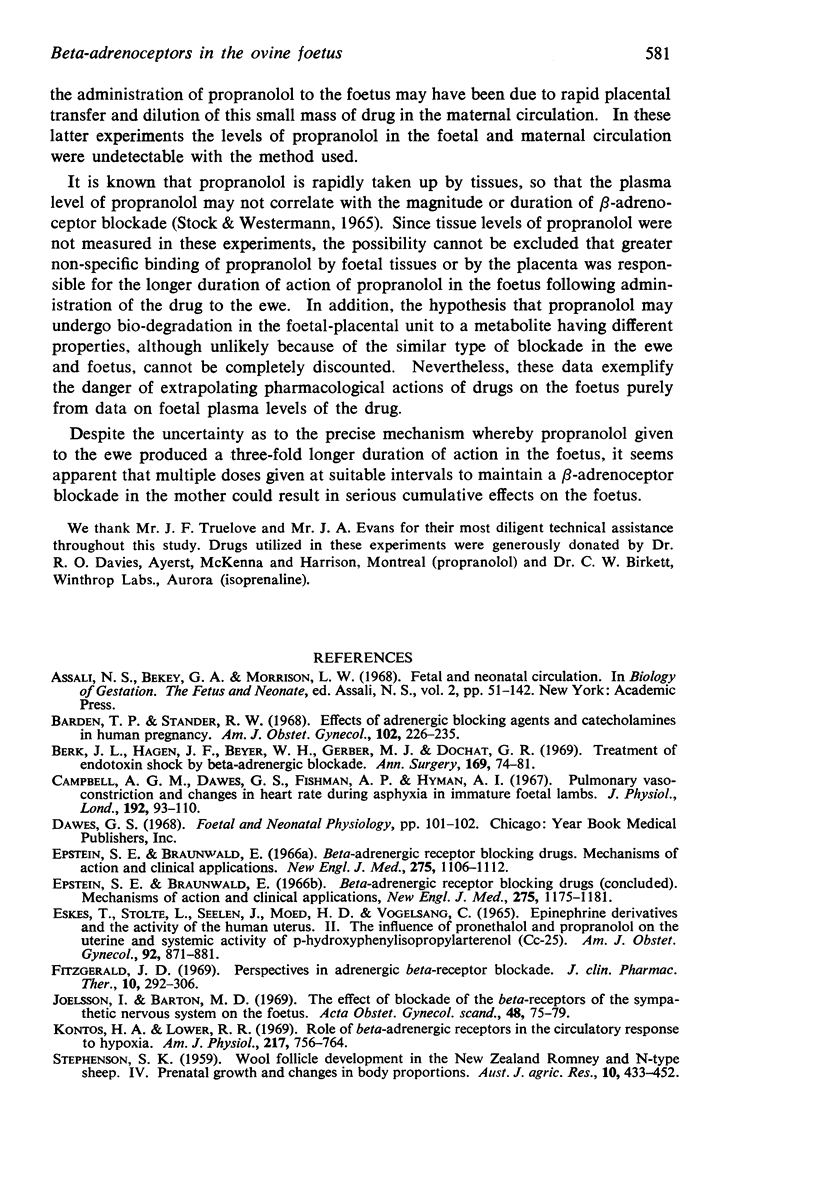
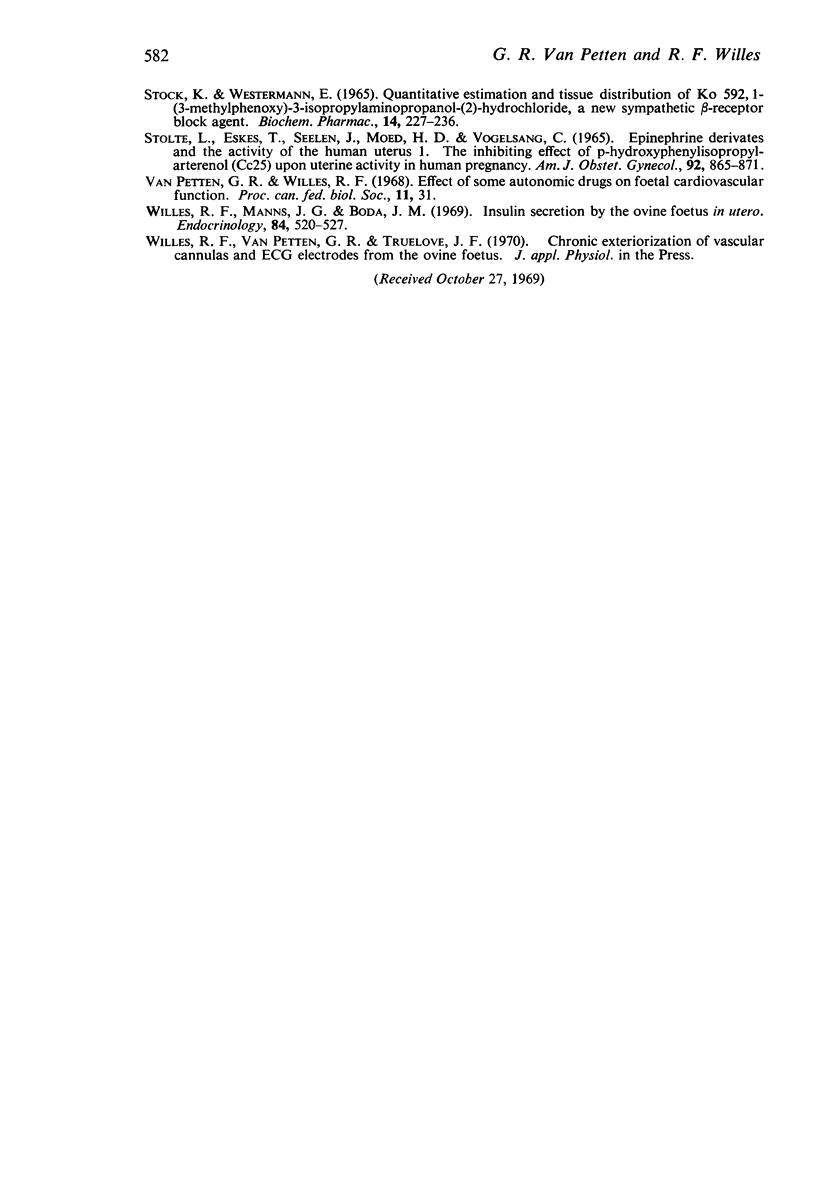
Selected References
These references are in PubMed. This may not be the complete list of references from this article.
- Barden T. P., Stander R. W. Effects of adrenergic blocking agents and catecholamines in human pregnancy. Am J Obstet Gynecol. 1968 Sep 15;102(2):226–235. doi: 10.1016/0002-9378(68)90323-2. [DOI] [PubMed] [Google Scholar]
- Berk J. L., Hagen J. F., Beyer W. H., Gerber M. J., Dochat G. R. The treatment of endotoxin shock by beta adrenergic blockade. Ann Surg. 1969 Jan;169(1):74–81. doi: 10.1097/00000658-196901000-00007. [DOI] [PMC free article] [PubMed] [Google Scholar]
- ESKES T., STOLTE L., SEELEN J., MOED H. D., VOGELSANG C. EPINEPHRINE DERIVATES AND THE ACTIVITY OF THE HUMAN UTERUS. II. THE INFLUENCE OF PRONETHALOL AND PROPANOLOLT ON THE UTERINE AND SYSTEMIC ACTIVITY OF P-HYDROXYPHENYLISOPROPYLARTERENOL (CC-25). Am J Obstet Gynecol. 1965 Jul 15;92:871–881. doi: 10.1016/s0002-9378(16)34796-2. [DOI] [PubMed] [Google Scholar]
- Epstein S. E., Braunwald E. Beta-adrenergic receptor blocking drugs. Mechanisms of action and clinical applications. N Engl J Med. 1966 Nov 17;275(20):1106–contd. doi: 10.1056/NEJM196611172752006. [DOI] [PubMed] [Google Scholar]
- Epstein S. E., Braunwald E. Beta-adrenergic receptor blocking drugs. Mechanisms of action and clinical applications. N Engl J Med. 1966 Nov 24;275(21):1175–concl. doi: 10.1056/NEJM196611242752108. [DOI] [PubMed] [Google Scholar]
- Joelsson I., Barton M. D. The effect of blockade of the beta receptors of the sympathetic nervous system of the fetus. A preliminary report. Acta Obstet Gynecol Scand. 1969;48(Suppl):75+–75+. doi: 10.3109/00016346909157714. [DOI] [PubMed] [Google Scholar]
- Kontos H. A., Lower R. R. Role of beta-adrenergic receptors in the circulatory response to hypoxia. Am J Physiol. 1969 Sep;217(3):756–763. doi: 10.1152/ajplegacy.1969.217.3.756. [DOI] [PubMed] [Google Scholar]
- STOLTE L., ESKES T., SEELEN J., MOED H. D., VOGELSANG C. EPINEPHRINE DERIVATES AND THE ACTIVITY OF THE HUMAN UTERUS. I. . THE INHIBITING EFFECT OF P-HYDROXYPHENYLISOPROPYLARTERENOL (CC-25) UPON UTERINE ACTIVITY IN HUMAN PREGNANCY. Am J Obstet Gynecol. 1965 Jul 15;92:865–870. doi: 10.1016/s0002-9378(16)34795-0. [DOI] [PubMed] [Google Scholar]
- Willes R. F., Boda J. M., Manns J. G. Insulin secretion by the ovine fetus in utero. Endocrinology. 1969 Mar;84(3):520–527. doi: 10.1210/endo-84-3-520. [DOI] [PubMed] [Google Scholar]


